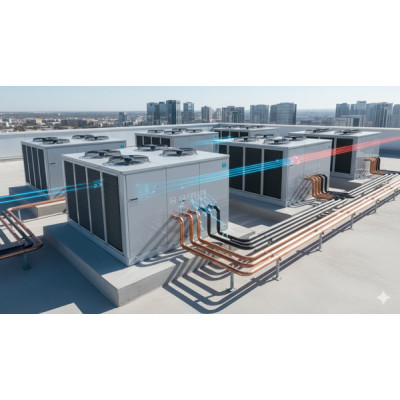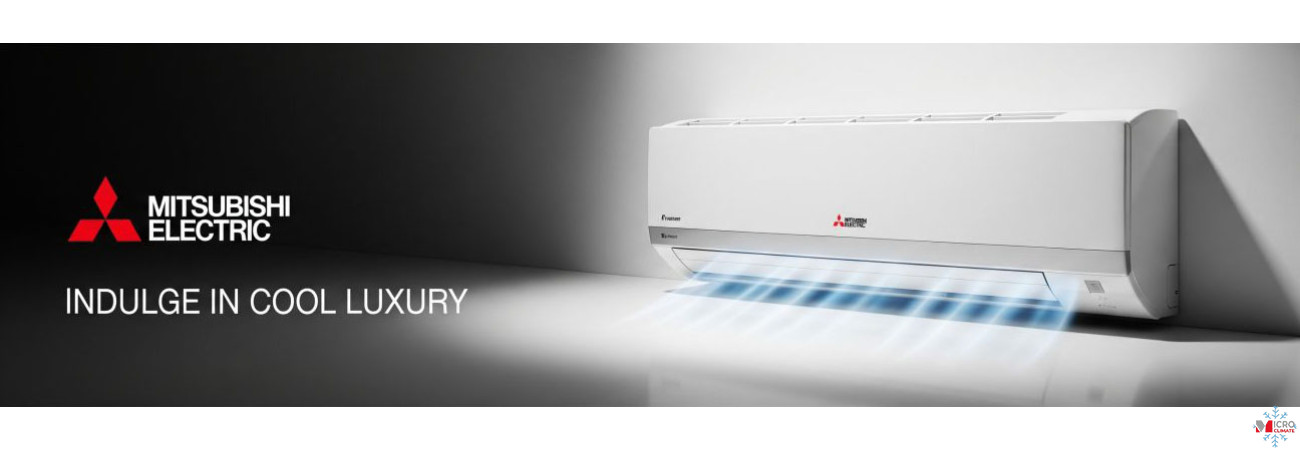
Variable refrigerant flow (VRF) and variable refrigerant volume (VRV) systems represent the most sophisticated form of direct-expansion air conditioning available today. Originally developed by Daikin in 1982, VRV (a registered trademark) and its generic equivalent VRF have transformed commercial HVAC design by offering simultaneous heating and cooling, precise zoning, and remarkable energy efficiency.
Operating Principle
A VRF system uses a single or multiple outdoor units connected by refrigerant piping to several indoor units. Instead of circulating water (as in chiller systems), VRF systems circulate refrigerant directly, modulating flow according to each zone’s thermal demand.
Inverter-driven compressors vary their speed to match the total load in real time, eliminating energy waste from constant cycling.
Types of VRF Systems
-
Cooling-only VRF – used in warm climates or data rooms where heating is not required.
-
Heat-pump VRF – provides both heating and cooling, but not simultaneously.
-
Heat-recovery VRF – the most advanced type, capable of heating some zones while cooling others at the same time, transferring waste heat internally for maximum efficiency.
Performance and Efficiency
Modern VRF systems achieve seasonal COP values up to 5.5 and SEER values up to 8.5, depending on brand and configuration.
This means for every 1 kW of electrical input, the system can deliver more than 5 kW of heating.
Typical energy savings compared with traditional multi-split systems are 25–45 % annually.
Control and Zoning
Each indoor unit is individually controlled, allowing personalised temperature settings per room or floor.
Electronic expansion valves in each branch regulate refrigerant precisely. This zoning ability makes VRF technology ideal for buildings with varying occupancy — offices, hotels, and educational institutions.
Installation and Design Flexibility
VRF systems support refrigerant pipe runs up to 1 200 m total and vertical separation up to 90 m, making them suitable for high-rise buildings in central London.
Their modular design allows incremental expansion without major renovation — an important advantage for leased commercial properties.
Heat Recovery Function
In a heat-recovery VRF system, the heat absorbed from cooling zones is reused to heat others via a branch selector (BS) box.
This internal energy transfer can reduce total power consumption by up to 40 % compared with independent systems.
Maintenance and Reliability
Because compressors operate at variable speeds and never run at full load continuously, mechanical wear is lower.
Typical service life exceeds 20 years with regular maintenance. Built-in diagnostics monitor pressures, temperatures, and refrigerant levels, alerting technicians to anomalies before failures occur.
Environmental Advantages
VRF technology supports low-GWP refrigerants and eliminates water leaks or corrosion associated with hydronic systems.
Manufacturers such as Daikin, Mitsubishi Electric, and Toshiba offer R32-based models with reduced carbon footprints and compliance with F-Gas Phase-Down.
Conclusion
VRF and VRV technologies represent the highest standard of energy-efficient climate control in the modern HVAC industry.
For architects, engineers, and facility managers in the UK, understanding these systems is crucial for designing sustainable, comfortable, and low-carbon buildings that meet future environmental goals.





